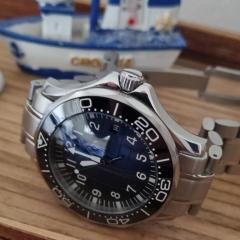Introduction
-
Similar Content
-
Recently Browsing
- No registered users viewing this page.
-
Topics
-
Posts
-
It’s done and the movement feats/aligns perfectly in the case. I stripped off 10mm wide sandpaper and wrapped /sticked it around the pad with double sided tape. I run with 400 grit and finished with 1000 grit. Now I can continue with my build, I’m going to buy a dial and hands. The dial I am considering is a larger diameter 36.5mm than the allotted space 35mm in the case, so I will apply the same ‘technique’ with sandpaper and Dremel/drill. Thank you @RichardHarris123, @AndyGSi and watchrepairtalk community for your help.
-
As you're in the UK I suggest you look at Cousins for screwdriver sets as they've never cause me any problems. The key is the right blade, dressed correctly to suit the screw. https://www.cousinsuk.com/product/cousins-swiss-style-sets-rotating-stands https://www.cousinsuk.com/product/value-screwdriver-sets-wooden-cases https://www.cousinsuk.com/product/cousins-swiss-style-flat-stainless-steel
-
It's difficult to tell because of the dial ring but I expect it's the highest hand version they do know as a 'H6' The only way to be sure is to remove the hands and dial and measure the cannon pinion.
-
You're 100 % correct! I'm only interested in dissecting a counterfeit movement, and after that, destroying it. As a general rule, I would never buy, wear, or sell a counterfeit watch or movement. In this case, I'm willing to make an exception, as I want to get a feel for what a really good counterfeit feels like so I can better identify counterfeits. Thanks, that will be helpful! I absolutely see where you're coming from, and I'm basically in the same camp. However, I'm willing to make an exception if the purpose is to gain knowledge which will help to better combat counterfeits, and the movement isn't used for any other purpose than dissecting it and finally destroying it. Looking at the link provided by @GuyMontag most of the time we won't have any problem identifying a counterfeit. As experienced repairers of genuine Rolex movements, I would guess we would be able to identify a counterfeit in seconds. However, a well-made super clone of the movement might be harder to detect, and that's why I'm investigating the possibility of getting one. Thank you for your input and for helping clarify the situation — much appreciated. We’re right on topic. I’m currently servicing my second Rolex 3135 movement for a client, and I started this thread to document and discuss any issues or anomalies that may arise during the work. During disassembly, I encountered a few screws that, to me, appeared inconsistent with what I would think are typical Rolex finishing standards. This initially raised concerns that I might be dealing with a high-grade counterfeit or "super clone." Fortunately, those concerns were laid to rest, but the experience highlighted the importance of being able to reliably identify counterfeit components.
-
By LittleWatchShop · Posted
I suggest FreeCAD as the tool to use for 3D design. It is free open source. For Android phones, I use "Watch Accuracy Timer" For cleaning, just get a class dish and soak the movement parts in fluid. Dry on lint free paper under an incandescent lamp. Once you decide to invest in the hobby, there are many ideas for DIY cleaning machines and chemicals. I use traditional spin machines and the expensive L&R fluids. I have invested $$$$$$ into this "hobby" but I have the means to do crazy stuff. I do exactly what he does for rinse. I use the L&R Master designed for two rinse jars PLUS an extra rinse jar. Great video
-





.thumb.jpg.f8d5a2ee6a56bc9650b33d2a1ade8a08.jpg)



Recommended Posts
Join the conversation
You can post now and register later. If you have an account, sign in now to post with your account.
Note: Your post will require moderator approval before it will be visible.